Digital Poster
Analysis & Visualization
ISMRM & ISMRT Annual Meeting & Exhibition • 10-15 May 2025 • Honolulu, Hawai'i

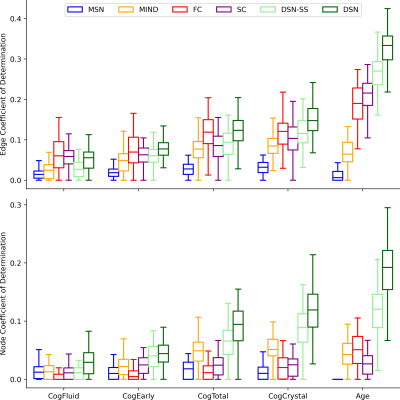 |
Computer Number: 81
4048. Diffusion
MRI Microstructural Similarity Networks Map the Heritable and
Hierarchical Organization of Gray Matter in the Human Brain
A. Sadikov, H. Choi, L. Cai, X. Pan, P. Mukherjee
University of California, San Francisco, San Francisco, United States
Impact: Diffusion similarity networks can be easily
integrated into conventional diffusion MRI analysis, adding
information complementary to structural connectivity, and
could prove useful in investigating an array of neurological
and psychiatric conditions.
|
|
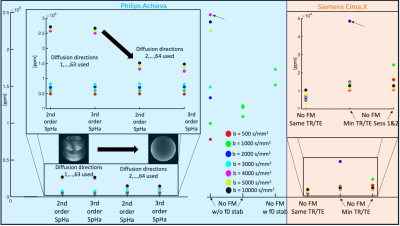 |
Computer Number: 82
4049. DIM:
A Diffusion Instability Measure
T. Schmidt, Z. Nagy
Institute for Biomedical Engineering, Zurich, Switzerland
Impact: We developed and tested a diffusion instability
measure (DIM) that is sensitive to factors affecting image
quality, such as magnetic field monitoring, f0
stabilization, TE, gradient strengths, making it a promising
tool for routine diffusion MRI quality assurance.
|
|
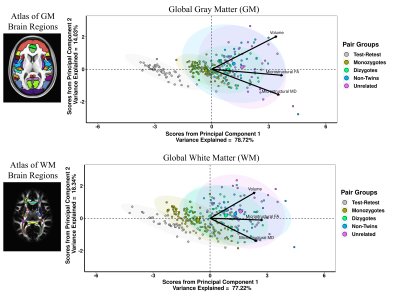 |
Computer Number: 83
4050. Nature
and Nurture: Assessing Brain Heritability using Diffusion
Tensor-Based Morphometry on Data from the Human Connectome
Project
R. Hafiz, G. Kislik, M. O. Irfanoglu, A. Nayak, C. Pierpaoli
National Institute of Biomedical Imaging and Bioengineering (NIBIB), National Institutes of Health (NIH), Bethesda, United States
Impact: The DTBM-derived results indicated that nature
and nurture affect the brain ‘size’ more than ‘tissue
microstructure’ (assessed by DTI metrics). This is
potentially significant for future applications of DTBM in
heritability analysis and their possible associations to
behavioral features.
|
|
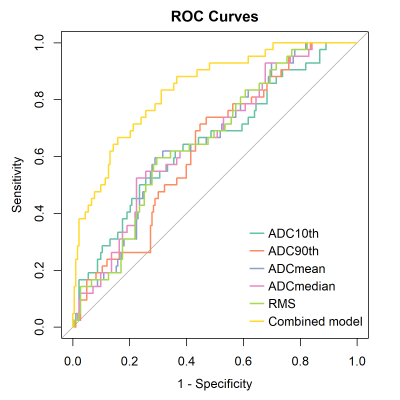 |
Computer Number: 84
4051. Preoperative
Evaluation of Upper Urinary Tract Urothelial Carcinoma
Pathological Grade Using Volumetric ADC Histogram Analysis
R. Nai, K. Wang, W. Wang, Z. Xi, J. Li, X. Zhang, H. Wang,
X. Wang
Peking University First Hospital, Beijing, China
Impact: Volumetric ADC histogram parameters hold promise
for the preoperative differentiation of UTUC grades. When
combined with clinical factors, these metrics provide a
noninvasive approach to UTUC grading that exceeds the
predictive accuracy of ADC histogram parameters alone.
|
|
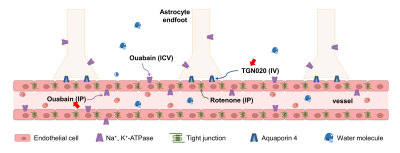 |
Computer Number: 85
4052. Physiological
mechanism of water exchange across the blood-brain barrier
Z. Wang, S. Hu, Y. Liu, R. Bai
Key Laboratory of Biomedical Engineering of Ministry of Education, College of Biomedical Engineering and Instrument Science, Zhejiang University, Hangzhou, China
Impact: This study advances the understanding of
physiological mechanisms regulating water exchange across
the BBB and offers a fundamental reference for future
research on this topic.
|
|
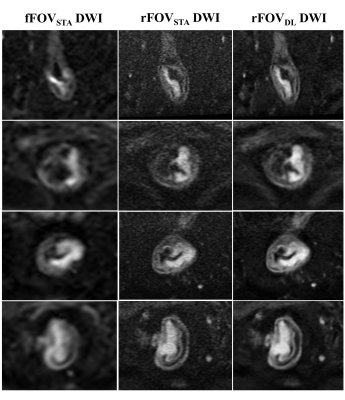 |
Computer Number: 86
4053. Deep
Learning-Reconstructed Reduced-field-of-view DWI in Rectal
Cancer:Enhanced Rectal Wall Layering and Improved T Staging
Accuracy
W. Peng, S. wang, H. zhang
National Cancer Center/National Clinical Research Center for Cancer/Cancer Hospital, Beijing, China
Impact: This study demonstrated the clinical feasibility
of DLR-enhanced rFOV DWI for rectal cancer. It improved the
spatial resolution and the discriminability of
mucosa-submucosa-muscularis layers, which facilitated higher
T-staging accuracy, especially in early-stage tumors.
|
|
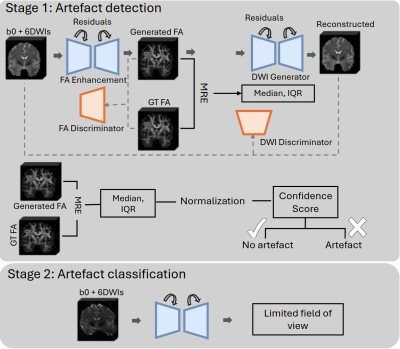 |
Computer Number: 87
4054. SdADC:
Semi-supervised Diffusion MRI Artefact Detection and
Classification
X. Wang, Z. Liu, S. Chen, H. Li, H. Wang, M. Barnett, W.
Cai, C. Wang, Z. Tang
The University of Sydney, Sydney, Australia
Impact: Our method improves dMRI data reliability by
automating artifact detection and classification using a
two-stage deep learning approach with angular
resolution-enhanced FA. The propsoed framework consistently
identifies and categorizes artifacts, enhancing
preprocessing and analysis across large-scale diffusion MRI
datasets.
|
|
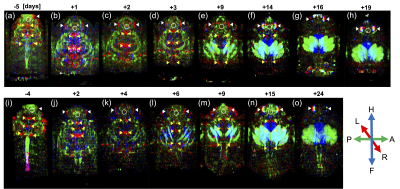 |
Computer Number: 88
4055. Observation
of central nervous system and body fluid viscosity of Trypoxulus
dichotomus (Coleoptera) in the pupal stage using 9.4-T MRI.
S. Ikegami, R. Harada, Y. Kusaba, A. Horie, Y. Oda, K.
Niihara, M. Yoshida, T. Inoue A., K. Kuroda
Tokai University, Hiratsuka, Kanagawa, Japan
Impact: The present results show that the nerve fibers
and ganglia remain, while other tissues are developed. These
findings give new insight into the relationship between the
central nerve system and metamorphosis in holometabolous
insects.
|
|
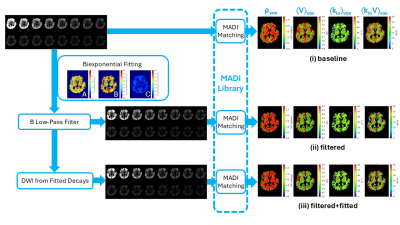 |
Computer Number: 89
4056. Biexponential
fitting to filter CSF-rich voxels and denoise diffusion-weighted
image data: improving MADI quantification
G. Wilson, X. Li, M. Pike, C. Springer
University of Washington, Seattle, United States
Impact: MADI produces quantitative maps of physiologic
cellular parameters: cell volume, cell density, and
oxidative metabolism. It uniquely characterizes tumor
metabolism and treatment response. This work improves MADI
accuracy by robust filtering of CSF-rich voxels.
|
|
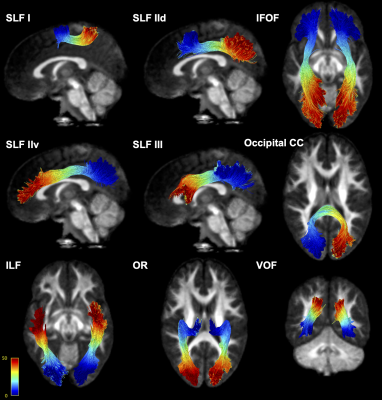 |
Computer Number: 90
4057. Fixel-based
tractometry unravels the structural-functional coupling of
vision in children with unilateral cerebral palsy
A. Radwan, M. Crotti, L. Kleeren, N. Ben Itzhak, L.
Mailleux, D. Christiaens, H. Feys, P. Dupont, E. Ortibus, S.
Sunaert
KU Leuven, Leuven, Belgium
Impact: This study leverages advanced fixel-based
tractometry (FBT) to explore segment-specific
structural-functional relationships in visual pathways of
children with unilateral cerebral palsy, potentially
providing insights that could guide future research and
improve individualized care for visual impairments in this
population.
|
|
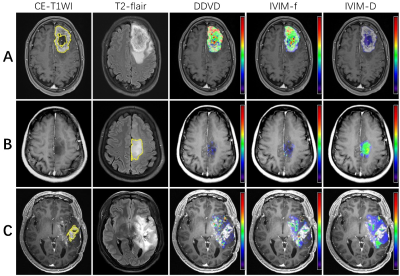 |
Computer Number: 91
4058. Innovative
Tissue Perfusion Views:Using Diffusion-Derived Vessel Density
Habitat Analysis for Isocitrate Dehydrogenase Genotyping in
Glioma
C. Ni, R. Lin, H. Guan, Y. Song, G. Yang, R. Jiang
Fujian Medical University Union Hospital, Fuzhou, China
Impact: This study introduces DDVD as a novel biomarker
for non-invasive IDH genotyping in diffuse gliomas, offering
valuable insights into tumor biology and advancing the field
toward more personalized treatment strategies in
neuro-oncology.
|
|
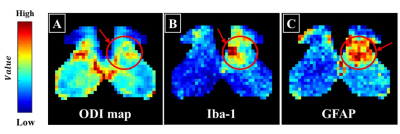 |
Computer Number: 92
4059. Diffusion
MRI Analysis of Neuropathic Pain and Gliosis in the SNL Rat
Model
S. Im, S. Jin, H. Cho
Ulsan National Institute of Science and Technology (UNIST), Ulsan, Korea, Republic of
Impact: The study aids in developing strategies for
treating neuropathic pain and understanding glial
interactions in the spinal cord.
|
|
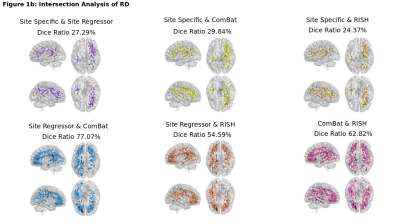 |
Computer Number: 93
4060. Systematic
Comparison of Various Voxelwise Harmonization Techniques for
Diffusion MRI
S. Gupta, G. Rathi, K. Bodempudi, V. Mishra
University of Alabama at Birmingham, Birmingham, United States
Impact: Our study suggests voxelwise dMRI harmonization
using either ComBat or RISH should be interpreted with
caution. Furthermore, when need be, traditional methods of
using site as regressors may be as powerful as ComBat or
RISH for statistical analysis.
|
|
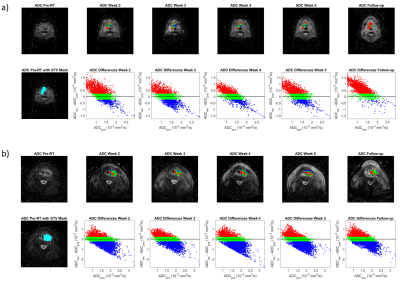 |
Computer Number: 94
4061. Functional
Diffusion Mapping in Weekly SPLICE-DWI Data for Outcome
Prediction in Head and Neck Squamous Cell Carcinomas
B. McDonald, S. Mulder, T. Schakel, F. Reinders, K. Kuijer,
P. Doornaert, L. McCullum, N. West, R. de Bree, M. de
Ridder, C. Terhaard, M. Philippens
The University of Texas MD Anderson Cancer Center, Houston, United States
Impact: This study is the first to apply Functional
Diffusion Mapping (fDM) in head and neck cancer, revealing
its potential to improve adaptive radiation therapy by
identifying early predictors of response, which may guide
personalized treatment adjustments for better outcomes.
|
|
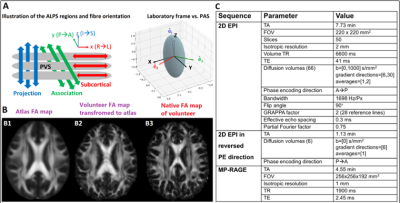 |
Computer Number: 95
4062. Using
a principle axis system allows automatic evaluation of
glymphatic flow with ALPS in imaging space and corrects for head
and fibre orientation
A. Ajouz, L. J. Frohwein, O. Jansen, J-B Hövener
Siemens Healthineers AG, Forchheim, Germany
Impact:
Accurate, automated placement of ROIs for ALPS-PAS yields a stronger ALPS effect and reproducible ROIs without registration of the acquired data, ideal for longitudinal studies. |
|
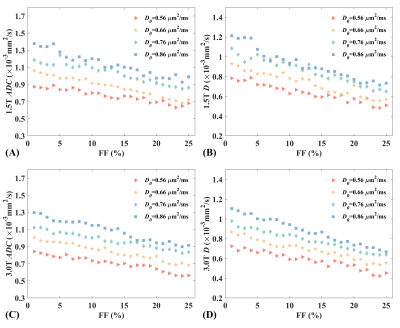 |
Computer Number: 96
4063. Effect
of hepatic steatosis on the diffusion parameters in
diffusion-weighted imaging by Monte Carlo simulations
M. Wang, T. Wu, X. Li, S. B. Reeder, D. Hernando, C. Wang
Anhui Medical University, Hefei, China
Impact: Monte Carlo simulations provide a novel means to
predict diffusion parameters for various degrees of hepatic
steatosis, and have the potential to correct the effect of
fat on the diffusion parameters when diagnosing liver
fibrosis by diffusion-weighted imaging.
|
The International Society for Magnetic Resonance in Medicine is accredited by the Accreditation Council for Continuing Medical Education to provide continuing medical education for physicians.